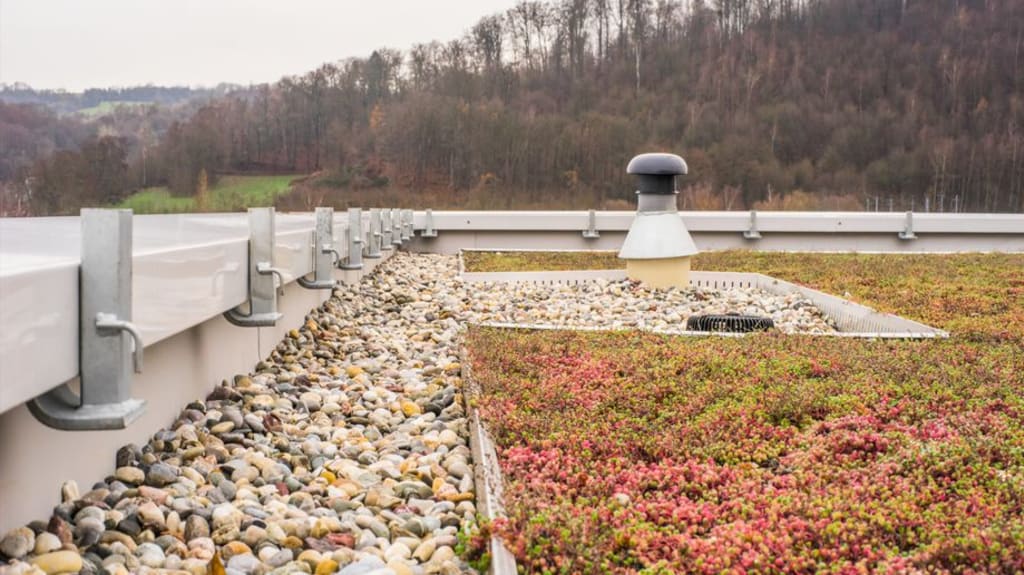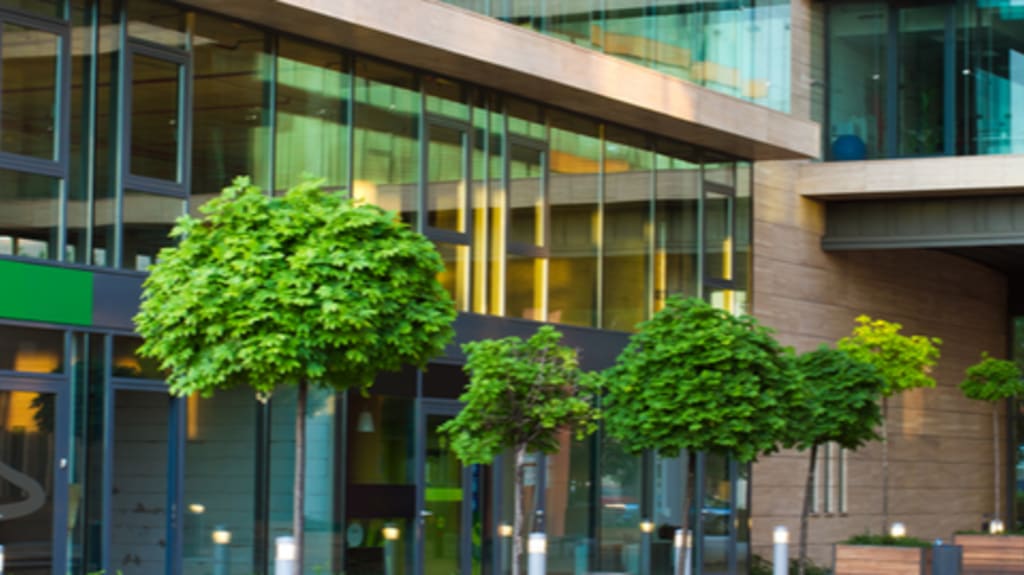Are you thinking of replacing the roof on your commercial building? Consider a blue roof! While not as well-known as green roofs, they offer many advantages. They’re excellent for stormwater management in urban settings. In particular, their ability to store water during intense storms (which have become more common due to climate change) helps alleviate pressure on city sewer systems. The water is released slowly to help prevent flooding.
The stored water can also be used in different ways: to water gardens, to cool buildings, for domestic use, etc. Blue roofs are a promising sustainable solution for environmental challenges.
What is a blue roof?
Blue roofs were specifically designed to store water (typically stormwater) and gradually release it. While precipitation can easily be absorbed in rural areas, the lack of permeable surfaces in cities can increase risk of flooding. These types of roofs help reduce pressure on municipal stormwater systems and prevent flooding.
What is the difference between a green roof and a blue roof?
While both blue roofs and green roofs help reduce the impact of stormwater on sewer networks during heavy rainfall and prevent flooding, they have some key differences.
Green roofs are an excellent option for stormwater management – they act as sponges, retaining a great deal of water. Plants, as well as their substrate and drainage systems, absorb and retain water naturally. As a result, green roofs reduce the amount of ground-level run-off compared to traditional roofing systems (pipes and gutters).
Blue roofs go further – their purpose is to retain water for as long as possible. A stormwater retention system combined with an excess-flow restrictor prevents water saturation. The water collected can also be used to cool the building, for domestic use, for gardening, and even for recreational purposes.
A combination of green and blue roofs yields the most effective stormwater management system. Water is retained in both the substrate and storage units located underneath it, as well as paved areas. It also provides maximum stormwater collection.
Here is an example of a system using both type of roofs:
What are the advantages of a blue roof?
While many people are familiar with green roofs and recognize their positive effects on a building’s energy efficiency and the urban environment, the advantages of blue roofs are not as well known. Here are some of them.
Reduce sewage pollution in lakes and rivers
Not only can blue roofs reduce the risk of flooding in cities, but they can also help reduce sewage pollution in waterways. In urban areas, a single sewer system takes care of both wastewater and rainwater. During storms, rainfall can quickly overwhelm the network, resulting in contaminated, untreated water spilling into lakes and rivers. They can help solve this problem.

Source Image: Wikipedia
Building cooling and reduced air conditioning costs
When combined with light-coloured roofing materials, a blue roof can significantly reduce a building’s cooling (air conditioning) costs. In some blue roof systems, a portion of water collected can be sprayed on the roof, further amplifying the cooling effect. In the long term, green renovations can really pay off.
Save and reuse water
The water collected can be used for recreational purposes, such as for fountains and watering plants on green roofs (if installed). It can also be used to cool solar panels or to supply toilets, reducing the use of potable water.

How does a blue roof work?
While designs may vary, a typical blue roof is structure includes a waterproof membrane placed on top of the vapour barrier and standard insulation. Above all of this sits a permeable substrate and surface, often a vegetated roof, with an empty space to collect rainwater underneath. Flow restrictors are placed at the main drainage points to control the water collection speed.
Blue roofs can be classified as active or passive depending on the type of controls used to regulate drainage.
Active blue roofs
Active systems use mechanical means to control the speed at which water flows from a roof. Water collected on the roof can be discharged in several ways, including through hydraulic valves or electronic valves connected to a timer.
Passive blue roofs
In contrast to active systems, which prevent water from collecting in the drainpipes, passive systems temporarily store water on the roof’s surface by extending the path the water must take to reach the evacuation drains. No direct control is needed.
Modular blue roofs
Plastic or metal modular trays can be used to modify existing roofs to retain rainwater. The water collected in the trays can either be stored in a porous medium or remain in the tray. Modular tray blue roofs offer greater flexibility in terms of scale and location of retention areas than integrated blue roof designs.
Can I put a blue roof on a house or other residential building?
Blue roofs can be used on many types of structures, including industrial, residential, and commercial buildings. They are constructed on flat or low-sloped roofs to prevent water from pooling, which would attract mosquitoes. Blue roof solutions can be adapted to any existing building.
To store a significant amount of water on the roof, it’s necessary to ensure that all waterproofing details are carefully planned and the load-bearing capacity of the roof is sufficient for the additional weight created by the water. Be sure to check with your municipality to see if a permit is required.
Maintenance and lifespan
Generally, a blue roof will last about 35 years of normal use. After 30 or 40 years, exposure to the sun and other elements may cause synthetic materials (plastics in particular) to deteriorate.
Roof and waterproof membrane maintenance will vary based on the types used, their age, and their quality. As with any roofing system, regular inspections are necessary to ensure that no repairs or replacements are needed.
Why choose a blue roof?
While they are not yet standard, blue roofs offer incredible potential benefits in terms of durability and the urban environment. In particular, they help reduce the risk of localized flooding. This can be beneficial if your commercial property is located in an area where flooding is frequent, especially given that water damage is one of the most common insurance claims.
Another advantage is their cooling effects. This is something to consider as heat waves become more frequent. Finally, the benefits of using rainwater, whether for domestic or recreational purposes, are not negligible. Water is a precious resource; we need to take care of it. That’s why we’ve been seeing more and more properties opting for blue roofs, including the Northwestern Medical Center in Chicago, whose blue roof system was designed by Hydrotech, a Quebec-based company. The same system was also included in the restoration of a rooftop terrace for a building at McGill University in Montreal.
By Chantal Tellier
Chantal Tellier holds a bachelor’s degree in communications and has worked as a journalist for many years. As a freelancer, she has covered various subjects: health and well-being, insurance, transportation, and entrepreneurship… Curious and energetic, she likes to add strings to her bow. She collaborates with RenoAssistance on topics related to renovation, construction and more.




